Understanding the 4 types of dental implants is crucial if you’re considering tooth replacement options. Dental implants have revolutionized the way we approach tooth loss, offering solutions that not only restore aesthetics but also provide functionality comparable to natural teeth. This article will delve deep into the various types of dental implants available, helping you determine which one may be best suited for your needs.
Why Dental Implants Matter
Dental implants serve as an innovative solution to replace missing teeth. They are small titanium posts or structures that are surgically inserted into the jawbone, acting as anchors for artificial teeth or bridges. Unlike traditional dentures, dental implants offer a more permanent solution, mimicking the function of natural roots and providing stability and strength for prosthetic teeth.
Choosing the right type of implant is essential for the long-term success and satisfaction of your dental restoration. An ill-suited choice could lead to complications or dissatisfaction with your new smile. Therefore, this article aims to break down the 4 types of dental implants, providing detailed information on each and guiding you toward an informed decision.
What Are Dental Implants?
A dental implant is essentially a metal post, typically made of titanium, designed to replace the root of a missing tooth. Once placed in the jawbone, it fuses with the bone over time through a process called osseointegration, creating a strong foundation for replacement teeth.
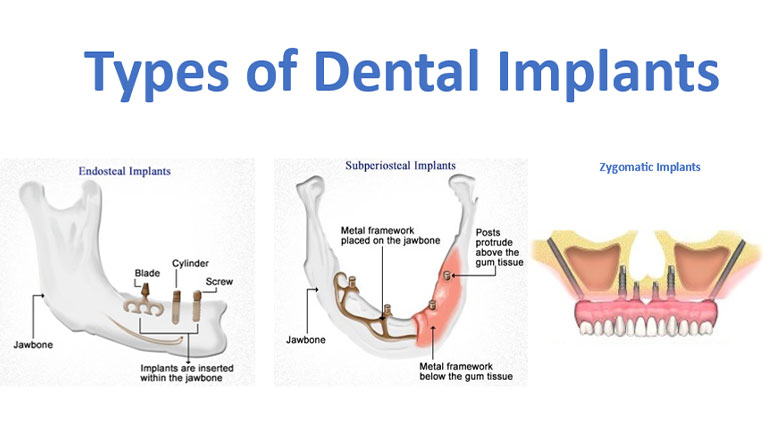
The evolution of dental implants has led to various types that cater to different dental conditions and individual needs. Understanding these can help you make educated choices, especially when faced with options like All-on-4 or All-on-6 dental implants.
Type 1: Endosteal Implants – The Most Common Choice
Endosteal implants are the most widely used type of dental implants.
These implants are placed directly into the jawbone, providing a sturdy base for replacement teeth. They are ideal for patients who have sufficient bone density and healthy gum tissue, making them a reliable option for many seeking tooth replacement.
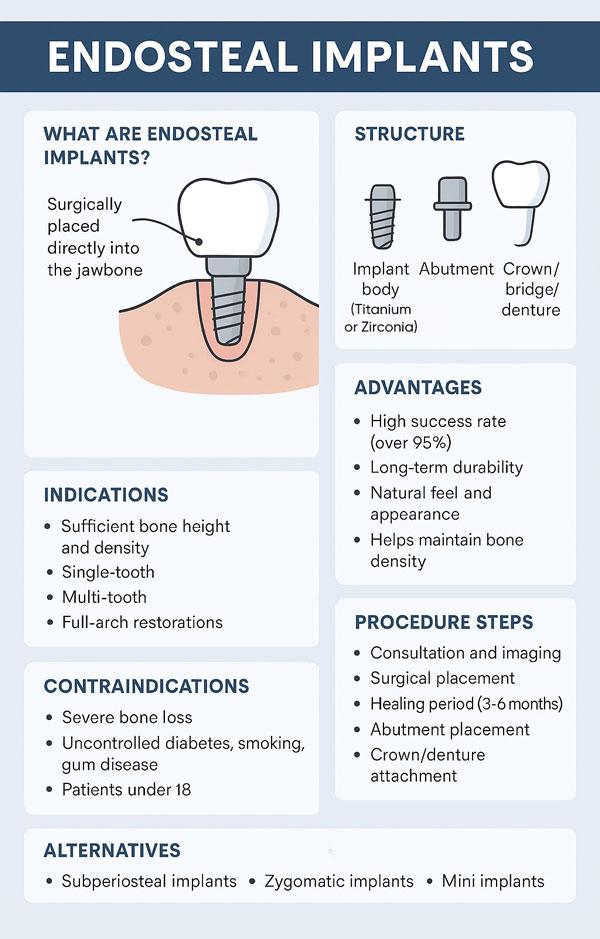
Definition and Placement
Endosteal implants are inserted directly into the bone. After the placement, a healing period is required during which the bone fuses with the implant. This integration ensures that the implant is firmly anchored, allowing for the attachment of prosthetic teeth later.
Typically, a crown is secured onto the implant after the healing process, restoring both function and appearance.
Best For Patients With Healthy Bone Structure
Patients with healthy bone structure are typically the best candidates for endosteal implants. The robust nature of the jawbone allows for effective osseointegration, ensuring long-term success.
However, individuals with significant bone loss might find that they require additional procedures, such as bone grafting, before undergoing this type of implant surgery.
Materials Used
Endosteal implants are commonly made from biocompatible materials such as titanium or zirconia. Titanium is preferred due to its proven track record of success, durability, and the ability to integrate well with bone tissue.
Zirconia, while less common, offers a tooth-colored alternative that some patients prefer for aesthetic reasons.
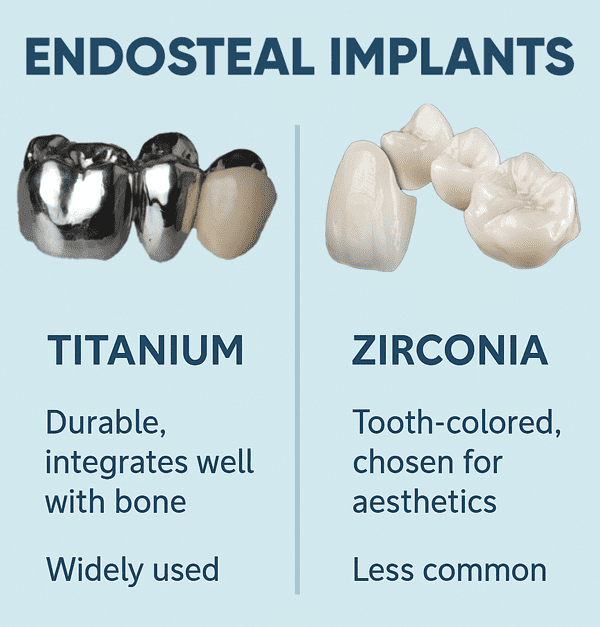
Pros and Cons
Pros:
- High success rate
- Permanent solution
- Natural look and feel
Cons:
- Requires sufficient bone density
- Surgical procedure needed
- Longer healing time compared to other options
Type 2: Subperiosteal Implants – For Low Bone Density
Subperiosteal implants present a unique option for patients with insufficient bone density.
Rather than being implanted into the jawbone, they rest on top of the bone beneath the gum tissue, providing support for prosthetic teeth without the need for extensive bone grafting.
Definition and Placement
Subperiosteal implants consist of a metal frame that is placed under the gum but above the jawbone. As the gums heal, the frame becomes integrated into the gum tissue, providing a stable platform for attaching artificial teeth.
This method is particularly beneficial for older patients or those who have experienced bone loss, allowing them to avoid the lengthy process of bone grafting.
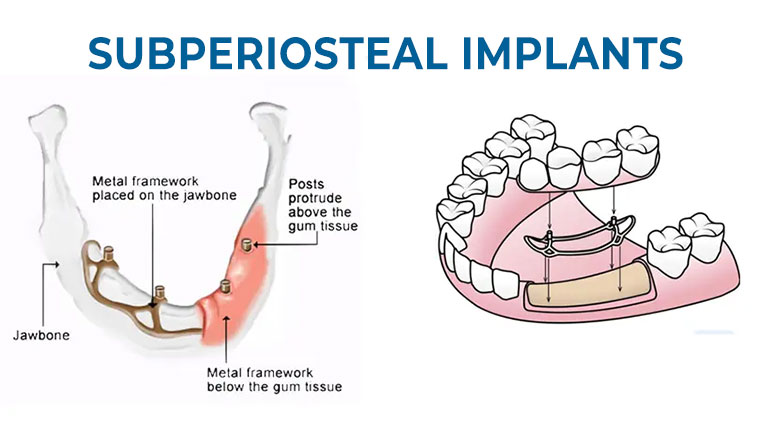
Ideal for Patients Who Don’t Want a Graft
For individuals with low bone density who wish to avoid invasive grafting procedures, subperiosteal implants can be an appealing alternative.
They provide a functional solution without the need to rebuild bone density via additional surgeries.
Specific Considerations
While subperiosteal implants can be advantageous for certain individuals, they do have limitations. Due to their positioning, they may not offer the same level of stability as endosteal implants.
Additionally, because fewer clinics specialize in this technique, finding a provider may be more challenging.
Pros and Cons
Pros:
- Less invasive than bone grafting
- Suitable for patients with low bone density
Cons:
- May not be as stable as endosteal implants
- Limited availability of specialists
- Higher risk of complications
Type 3: Zygomatic Implants – A Specialized Option
Zygomatic implants are a specialized type of dental implant designed for patients with severe bone resorption in the jaw.
These implants anchor into the cheekbone (zygoma) rather than the jaw, making them an effective solution for individuals who may not qualify for traditional implants due to extensive bone loss.
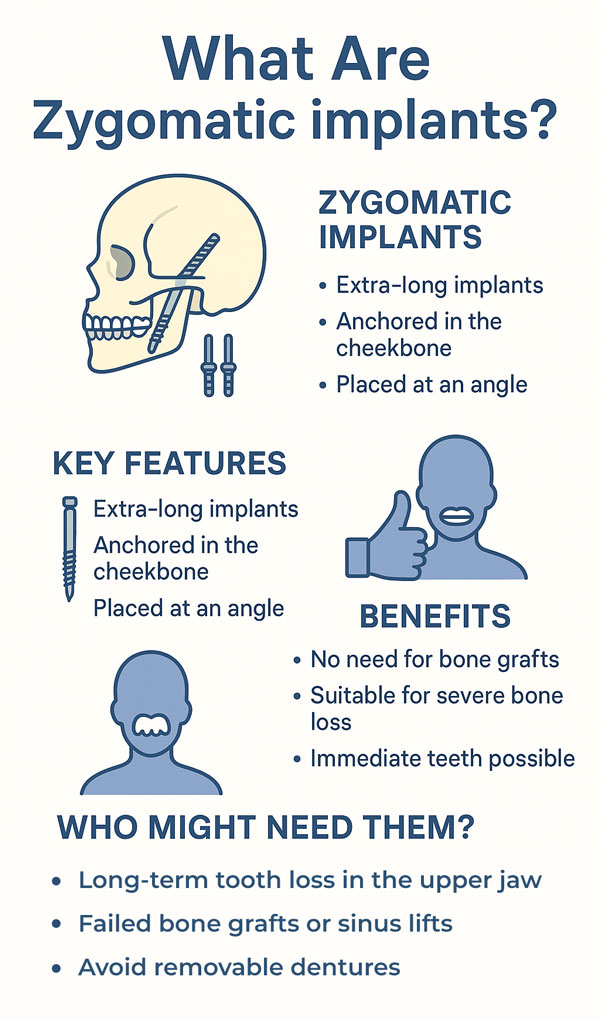
Anchored in the Cheekbone
Unlike traditional implants that require substantial jawbone, zygomatic implants are anchored into the zygomatic bone, which is denser and less prone to resorption.
This placement allows for immediate loading of prosthetics, resulting in a speedier restoration of function and aesthetics.
Used When the Jawbone Is Severely Resorbed
Zygomatic implants are often indicated for patients who have experienced significant bone loss—whether due to periodontal disease, trauma, or other factors—and cannot undergo conventional implant procedures.
They offer a viable alternative for restoring smiles and improving quality of life without needing elaborate bone grafting protocols.
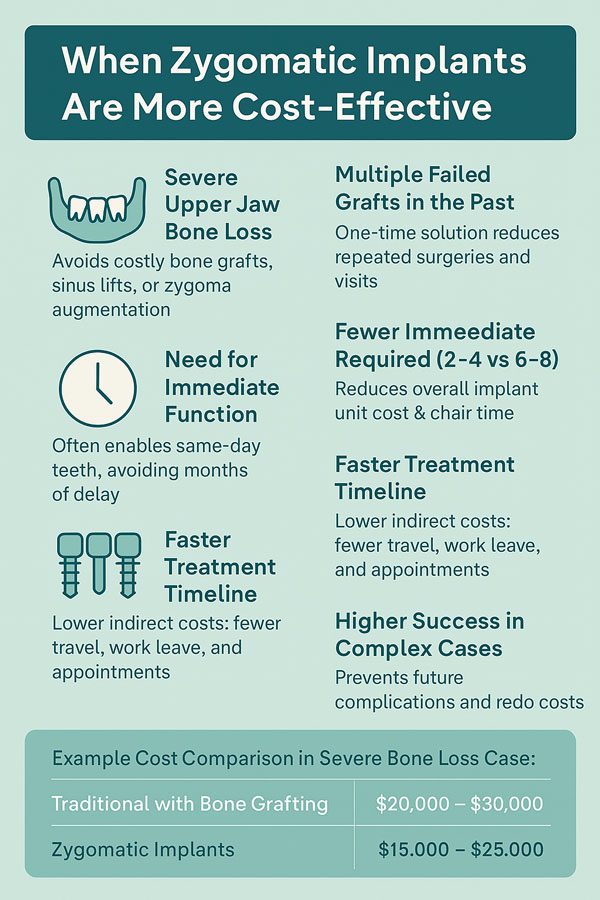
Highly Specialized Procedure
Given the complexity of the procedure and the specific anatomical considerations involved, zygomatic implants require highly skilled practitioners. Not all dental clinics are equipped to perform this surgery, so patients should seek out specialists who have experience and training in this area.
Pros and Cons
Pros:
- Immediate restoration possible
- Ideal for severe bone loss cases
- Fewer surgical procedures compared to grafting
Cons:
- Requires specialized skills
- Higher cost due to complexity
- Risks associated with advanced techniques
Type 4: All-on-4 Implants – Full Arch Restoration
All-on-4 implants represent a groundbreaking advancement in the field of dental implants, providing a full arch restoration with just four strategically placed implants.
This technique stands out for its efficiency, reducing the number of implants needed while maximizing support for an entire set of upper or lower teeth.
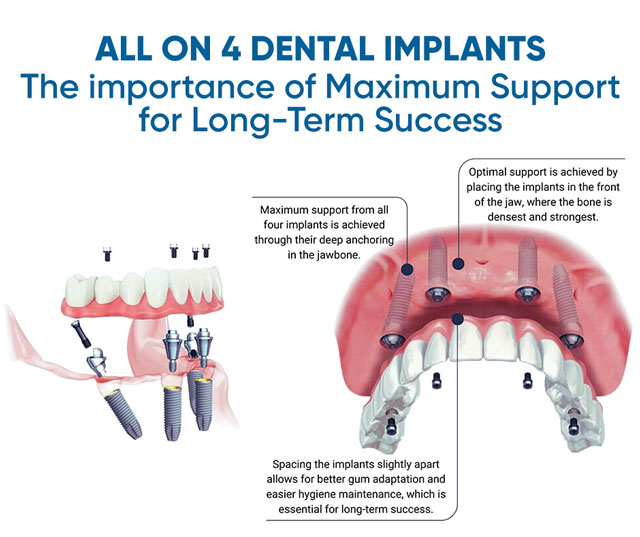
What They Are
All-on-4 implants involve placing four implants in the jaw, angled strategically to provide maximum support for a full arch of prosthetic teeth.
This approach enables patients to receive immediate restoration of function and aesthetics, significantly enhancing their quality of life.
Compare with Traditional Dentures or Full-Mouth Implants
When comparing All-on-4 implants to traditional dentures, the benefits become clear. Dentures can shift or become loose, leading to discomfort and difficulty eating.
All-on-4 implants provide a fixed solution that does not require removal, greatly improving comfort and confidence for wearers.
Additionally, when compared to full-mouth implants, All-on-4 represents a more efficient, cost-effective solution, requiring fewer implants and less invasive surgery.
Great for People Who Want a Permanent Full-Mouth Solution
Individuals who have lost most or all of their teeth often struggle with the impacts on their self-esteem and dietary options.
All-on-4 implants offer a lifeline, enabling these individuals to enjoy a full set of functioning teeth without complicated maintenance or the fear of instability.
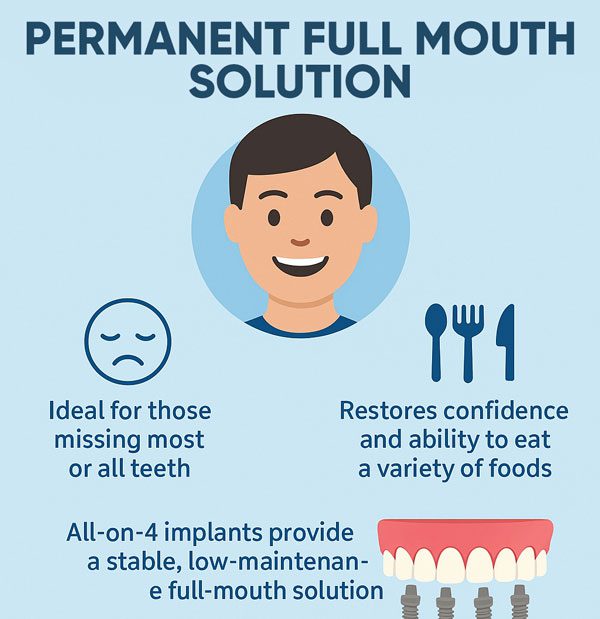
Pros and Cons
Pros:
- Permanent solution with fewer implants
- Immediate function and aesthetics
- Minimal recovery time
Cons:
- Requires suitable bone structure
- Potential for complications if not done correctly
- Cost may be higher than traditional dentures
Visual Summary: Comparison Table of 4 Types
| Type | Best For | Bone Requirement | Invasiveness | Permanence |
| Endosteal | Most patients | High | Moderate | Permanent |
| Subperiosteal | Low bone, no grafting | Low | Moderate | Semi-permanent |
| Zygomatic | Severe bone loss | Very Low | High | Permanent |
| All-on-4 | Full arch replacement | Moderate | Moderate | Permanent |
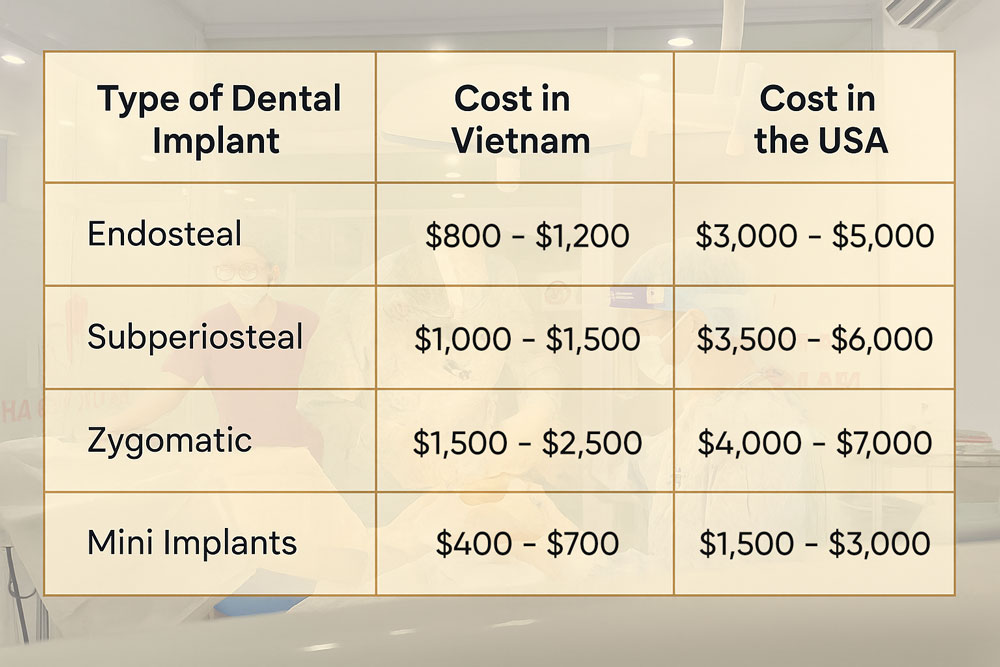
Choosing the Right Dental Implant Option for You
Selecting the appropriate dental implant option involves weighing various factors to ensure that you find the best fit for your needs.
Factors to Consider
When contemplating dental implants, consider your bone health, budget, desired aesthetic outcomes, and the time commitment required for treatment.
Understanding these elements will guide you toward making a choice that enhances both your oral health and overall well-being.
Bone Health
Your bone density plays a critical role in determining the type of implant that is suitable for you. Consult with your dentist to evaluate your jawbone’s health and whether additional procedures might be necessary prior to implantation.
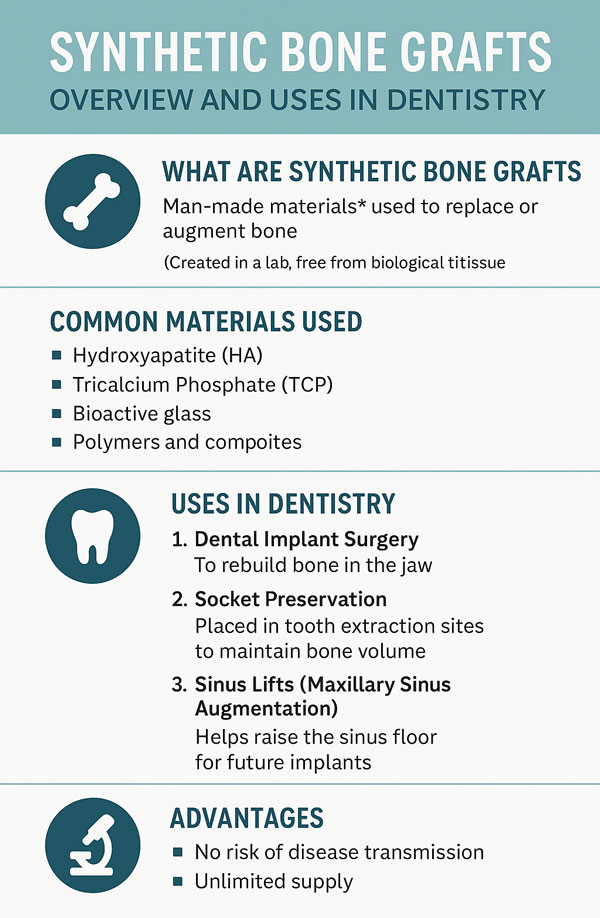
Budget
Costs for dental implants can vary widely based on the type chosen, geographic location, and the individual dental clinic’s pricing structure.
Consider your budget and inquire about financing options or insurance coverage related to dental implants.
Aesthetics and Function
The appearance of your dental restoration matters. Discuss your aesthetic goals with your dental professional to ensure the chosen implant solution meets your expectations for both form and function.
Time and Travel Commitment
If you’re an international client, consider the travel commitments involved in receiving dental care. Some treatments may require multiple visits, so planning accordingly will help streamline your experience.
Importance of Consulting a Dental Implant Specialist
Ultimately, the importance of consulting with a qualified dental implant specialist cannot be overstated. They can provide tailored advice and recommendations based on your unique circumstance and assist you in navigating the complexities of dental implant options effectively.
Conclusion
Navigating the landscape of dental implants can seem daunting, but understanding the 4 types of dental implants can empower you to make informed decisions. Whether you are leaning towards the traditional endosteal implants, considering the innovative All-on-4 approach, or exploring options for low bone density like subperiosteal or zygomatic implants, each type serves distinct needs and circumstances. Remember, your journey towards restoring your smile is critical, and choosing the right type of implant can make all the difference in achieving lasting satisfaction with your dental restoration. If you’re ready to explore your implant options further, consider booking a consultation today to discuss what best suits your needs.

 Google Reviews
Google Reviews Call
Call
SAIGON IMPLANT CENTER
Best dentist in Vietnam
Saigon Implant Center - Dental Clinic utilizes the latest technology for specialized treatment in the field of Single implant, full jaw implants, All on 4 implants, All on 6 implants, Zygoma implant....
SAIGON IMPLANT CENTER
Best dentist in Vietnam
Saigon Implant Center - Dental Clinic utilizes the latest technology for specialized treatment in the field of Single implant, full jaw implants, All on 4 implants, All on 6 implants, Zygoma implant....